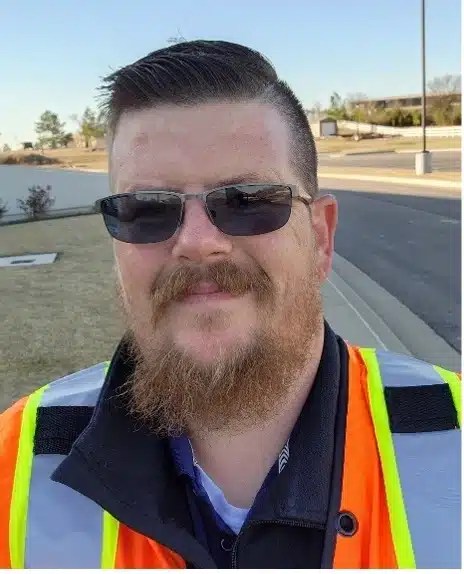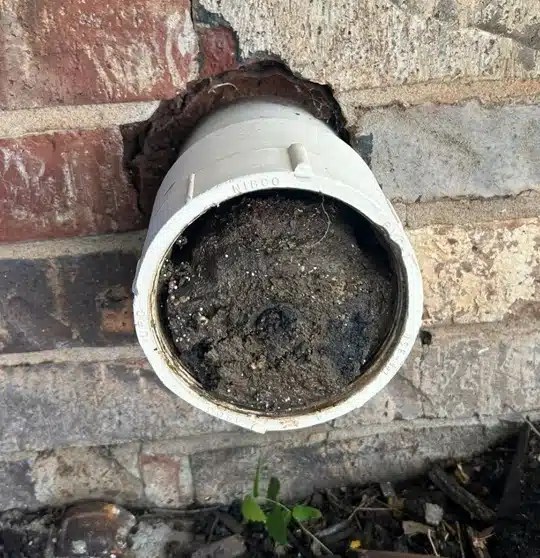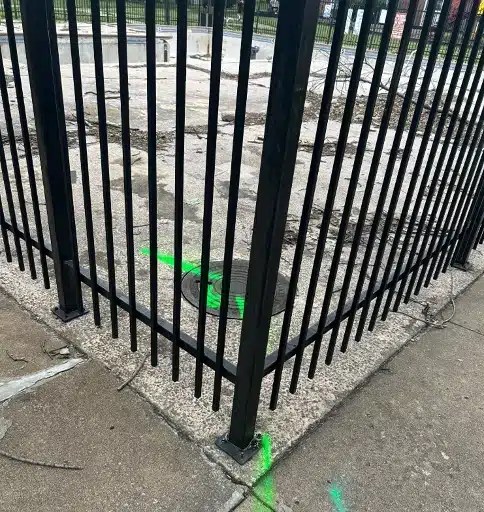SiteMap® (patent pending), powered by GPRS, provided accurate existing conditions documentation of all underground sanitary sewer and storm lines at a 19-acre apartment complex in Tulsa, Oklahoma.
The facility manager of the complex had no documentation of the subsurface infrastructure dating back to the 1950s and was unaware of the current state of the underground lines. An updated map of the hidden infrastructure was urgently needed.
GPRS Project Manager Joe Meyer was assigned to examine the complex’s sewer and sanitary systems and deliver a NASSCO-certified report identifying any blockages, defects, or obstructions. This report, along with the updated map, would enable the team to plan repairs and maintenance with confidence.

GPRS Project Manager Joe Meyer
All GPRS Project Managers hold NASSCO (National Association of Sewer Service Companies) certifications in pipeline (PACP), lateral (LACP), and manhole (MACP) evaluations.
To document defects and other concerns within sewer and stormwater systems, GPRS Project Managers rely on the Envirosight ROVVER X Mainline Crawler. This remote-operated device can travel up to 1,640 feet inside a sewer line and is adaptable for pipe diameters ranging from 6 to 96 inches.
For inspecting sewer laterals from the mainline, the ROVVER X SAT Lateral Launch camera is used to detect issues such as cross bores and other structural problems, allowing clients to take corrective action.
In tighter spaces where crawlers can’t reach – like vents, cleanouts, and toilet lines – GPRS Project Managers use push cameras, also known as flexible rodders. These cameras are equipped with a sonde that can be tracked using an electromagnetic (EM) locator to map non-metallic piping.

Meyer did find some obstructions within the pipes that he was able to relay to the client so they can make necessary repairs.
“For this job, I inspected and located 3,411 linear feet of underground pipes, including 1,823 feet of sanitary and storm sewer mainline and 1,588 feet of sanitary sewer lateral lines,” Meyer said.
The 75-year-old infrastructure presented challenges Meyer had to overcome, including the design of the pipes.
“There was no sweep to the clean outs, they were straight 90 [degrees], so there was some trouble trying to get the camera to swoop into them,” he explained. “That was a challenge, but I was able to overcome that by using that SAT launcher from the mainline and when I got one halfway, I could meet up with the other [from the other side of the mainline].”
Meyer also found himself getting creative to access manholes that were in difficult to access locations.
“There was a gated swimming pool area that had a manhole right in the corner of the gate,” he said. “I had to set up in a weird way, so that was kind of fun, but I overcame that challenge.”

GPRS Project Managers follow the American Public Works Association (APWA) universal color code to differentiate utilities.
This job was conducted during the first week of June, so Meyer was faced with a fun challenge since summer vacation had begun for the kids in the neighborhood.
“It was right when school got let out, so all my flags disappeared overnight,” Meyer said. “That was pretty funny, so I didn’t put any more flags down after that once I knew that they were all fair game. There were tons of kids around and there were some of them having fun watching what I was doing and seeing me test my crawler.”
Once he finished his investigation, Meyer provided the client with a map depicting the location of their sewer and sanitary lines via SiteMap, GPRS’ cloud-based infrastructure mapping platform. With SiteMap, the client can securely access their records 24/7 as they plan any upcoming renovation or restoration projects.

SiteMap® (patent pending), powered by GPRS, provided accurate existing conditions documentation of all underground sanitary sewer and storm lines at a 19-acre apartment complex in Tulsa, Oklahoma.
A NASSCO-certified Video Pipe Inspection report was created detailing the condition of the pipes and ranking defects by severity. Meyer did find some obstructions within the pipes that he was able to relay to the client so they can make necessary repairs.
“I found I had three units that did not have an external clean out and I could not access it from the main[line],” Meyer explained. “I also found a few clean outs that were completely full of dirt that maintenance had to come take care of while I was there. And I gave them a list, with priority, of what they can work on, so, all in all, it was helpful for them, even beyond just the mapping.”
Even, with the hurdles to overcome, Meyer completed his work within the client’s timeline.
“Everything really went well and it went on time as expected,” Meyer explained. “I kept in contact with the site contact and he was appreciative of that.”
Click below to schedule a live, personal SiteMap demo today!
